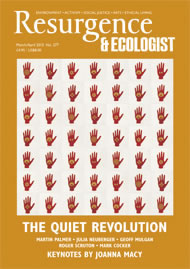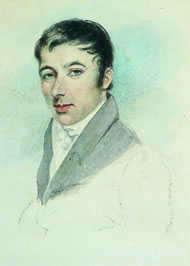Today most of our banking transactions are electronic, BACS transfers have become the ‘norm’, and if we do write cheques they still have to be transported by road to where they are processed. And since few of us are paid in cash any more, any cash transactions we undertake will mean a trip to a cash service point. All these finance-related systems rely on electricity and fossil fuel.
Modern banks are focused on profit making. They make profits from servicing accounts, from interest on loans and, most importantly for them, from investing their funds and trading worldwide. Millions of pounds can be sent around the world in seconds, creating profits, most of which do not benefit the average account holder. Whether this is right or wrong, acceptable or not, is another discussion. The fact remains that none of this would be possible without a constant and reliable source of electricity for communication, and oil for moving things around.
So whilst any crisis in the supply of power and energy would affect all organisations, it will be the underlying resilience of those who can adapt that will determine who survives. And it is the essential differences between the modern banking system and credit unions that suggest that credit unions will be far better able to meet the environmental challenges we now face than the high-street banks.
Credit unions were developed in the UK in the 19th century by the father of the British socialist movement, Robert Owen, in a bid to engage privileged and underprivileged alike in common and mutual financial support. They are run as cooperatives, with each member having one vote that is not linked to the amount of savings, or shares, owned by that member. The majority of credit unions are run on a voluntary basis by their members and are accountable to the Financial Services Authority (FSA), with members’ shares being covered by insurance.
Each credit union has a board of directors whose role is management, formulating policy and ensuring that the organisation operates legally. In addition to the Board of Directors there is a credit and a supervisory committee. The credit committee assesses loan applications and monitors the savings accounts. The supervisory committee acts as an internal auditor to the credit union, reporting to the board of directors and the members at the AGM.
Credit unions base their membership on a ‘common bond’, which is exactly what it says – something that binds the membership together. Most often this is geographical, usually applying to an existing community, but it can also mean the commonality of a workplace such as a police force, a hospital or county council offices. This common bond establishes a degree of mutual accountability amongst the membership, which minimises the risk of default on loans as well as encouraging active support.
Credit unions are essentially not for profit, but this doesn’t mean that savings don’t earn money. All profits are shared among the membership, and the amount received depends on the amount of shares saved. Each credit union sets its own dividend figure annually and bases it on how well it has performed the previous year. There is a legal obligation to keep a reserve of money, called liquidity, against defaulting loans. Once the liquidity figure has been established and all overheads and running costs accounted for, profits are returned to the members as a dividend.
Loans are normally required to be supported by shares, generally to about one third the value of the loan. In some cases instant loans are possible and these are decided on, case by case, by the loans committee. This is often where the common bond is advantageous to the credit union, as loan applicants are often known in the community and their risk levels are thus more easily assessed.
Credit union loans are decided on an individual basis and repayment terms are set to ensure continuity. Unlike in high-street banks, the monthly repayments are taken from the loan before interest is added, which makes a significant difference to the amount of overall interest paid. Additionally, unlike high-street bank loans, a loan can be paid off in full before its finish date with no penalties. Many other financial institutions require a percentage, if not all, of the interest they would have earnt if the loan had gone full-term.
Credit unions come in different sizes, although most fall into one of two categories: Type 1 is small, offers savings and loans facilities, has no paid workers, usually pays a dividend of between 0% and 3% and in addition probably has funds of up to £50,000.
Type 2 is large, has paid employees, offers mortgages and operates direct debits, standing orders and cashpoint facilities.
Type 2 is not dissimilar to a high-street bank, although the cooperative ethos and sharing of profits as a dividend remain the same as in smaller credit unions. However, the reliance on fossil fuels and a steady power supply is nearly the same, which is another reason, for those with a sustainability ethos, that the smaller credit unions are becoming a serious contender to the high-street bank, especially amongst the growing number of Transition communities.
The smaller credit unions really are bottom-up and community-run, do not need the internet, can be maintained on a laptop (which can be solar-powered), and can keep funds on the premises.
As post peak oil and climate change impact on all our lives there will be a need to travel less and source more locally. This will result in an increase in the start-up of a wide range of small local businesses, most of which will need financial input in the early stages. What could be better than knowing that the money you have deposited in your savings account with your local credit union has gone directly to another member of your community (or common bond area) to help others become viable and to enhance the services available to that community?
To find a credit union near you or to set one up, visit www.abcul.org







